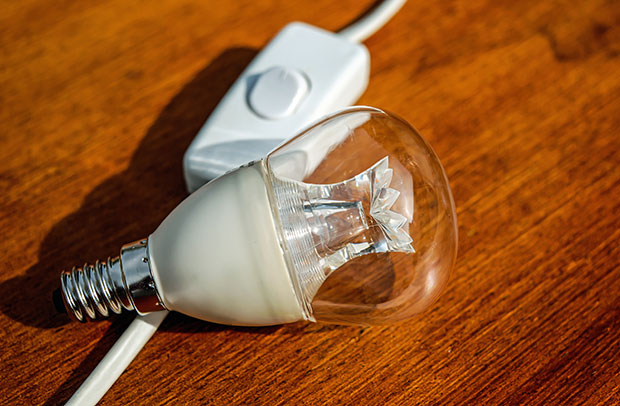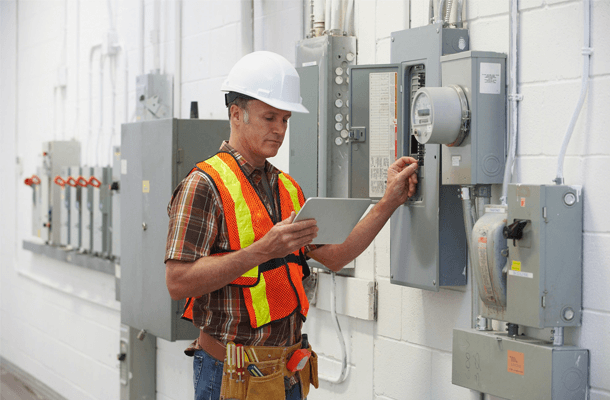Wondering what that electrical box on the side of your house or in your garage is? This device is known as an electrical switchboard. It not only connects the power to your home, but it’s also a very intelligent life-saving safety device that monitors all the wiring and devices internally connected to your home. Let’s dive in and learn more to see if it’s time for your switchboard to be upgraded.
There are three key components that safeguard a home’s electrical system:
- Fuses
- Circuit breakers
- Safety switches
Each of these benefits an electrical system in different ways. They all bring their own unique strengths to the table when it comes to preventing electrical hazards.

Understanding Circuit Breakers, Safety Switches and Fuses
- What are circuit breakers?
- How do safety switches work?
- What is an electrical fuse?
- Does my home have fuses or safety switches?
- How do I use a circuit breaker?
These are all very good and relevant questions about how to keep your home safe from electrical issues. Circuit breakers, safety switches, and fuses all help protect people in and around homes all throughout Australia. They all function very simply; but despite their simplicity, their design allows them to do their jobs perfectly.
Fuses – A protective system from yesteryear.
Fuses were developed more than a century ago. They were popularly used in older homes and other buildings to help provide protection against electrical faults. These older devices aren’t usually installed in new homes (because circuit breakers are more effective); but, with that said, they’re still common. Many older homes still have fuses.
There are different types of fuses in meter boxes, but all of them work based on the same principles.
- If too much current passes from the mains through the fuse, the fuse will break
- One example of a time this might occur is during a major power surge
- When the fuse is broken, it ultimately breaks the circuit
- Breaking the circuit stops the flow of electricity instantly
Circuit breakers – taking the fuse concept further
Circuit breakers function similarly to fuses in homes. They’re meant to offer protection from electrical surges, but they are a little more effective. Here’s how they work:
- A series of switches are located in the meter box
- These switches are in place to protect the equipment that’s powered inside of your home
- Here’s the part that’s similar to a fuse: if circuit breakers detect a surge of electrical current, they automatically turn themselves off (to break the electrical connection)
- Once the switch has tripped– or turned itself off– it’s easy to switch it back on again
If the source of the initial fault that caused the switch to trip is still live, the circuit will trip again. We recommend that you contact a licenced electrician to do a complete electrical check of your circuit and the wiring in your house. He or she can identify the cause of the trip.
Circuit breakers also switch themselves off in the event of an electric short. Many shorts are caused by people leaving equipment running for excessive periods of time. One common example would be leaving a ceiling fan on constantly. The heat generated by the fan can easily cause parts of it to fail, which can lead the circuit to trip and potentially cause fires within the home.
- Much like fuses, a circuit breaker will only protect your home and the equipment within it.
Safety switches – saving lives across Australia
Fuses and circuit breakers are two powerful items of defence against electrical disasters; but when it comes to protecting the people living in a home, safety switches are widely considered to be the best option. Safety switches are formally referred to as residual current devices (or RCDs) and are now mandatory in all new homes across Australia.
Safety switches work in a way that’s totally unique from fuses and circuit breakers. They are the best way to help keep people in your home safe from electrocution. Safety switches’ unique operation allows them to protect homeowners, residents, and visitors from electrocution within the home.
- When electrical current is flowing throughout a home, the current going into the home should be equal to the current being earthed
- Sometimes, unsafe elements are introduced to this process (think of a knife being used to remove a piece of bread from the toaster)
- When this occurs, the amount of current flowing into and out of the home changes
With a safety switch in place, you can rely on a device that constantly monitors these two currents. Safety switches instantly break the circuit they control when a current difference of more than 5mA is detected.
Protecting Residents From Electrocution: A Licensed Electrician From Everest Electrical Can Help
There’s another critical component to keeping residents of a home safe from electrocution: it’s imperative that components like the ones listed above are inspected regularly. It’s the only way to protect a property from electrical faults.
When you engage a licensed electrician, such as one of the professionals at Everest Electrical, to carry out a safety inspection on your property, you can be sure that your electrical safety devices are working as they should be. Electrical professionals also recommend regular, routine safety inspections. These ongoing inspections allow you and your electrician to easily identify any potential hazards throughout your home. In fact, your electrician can even assist in upgrading old fuse-based meter boxes using modern safety switches and circuit breakers.
If you’re interested in finding out whether it’s time for a switchboard upgrade in your home, our team can help. Reach out to the team from Everest Electrical today at 0410 229 139 and take advantage of a free safety inspection to ensure your home is protected from electrical hazards and fire danger.


